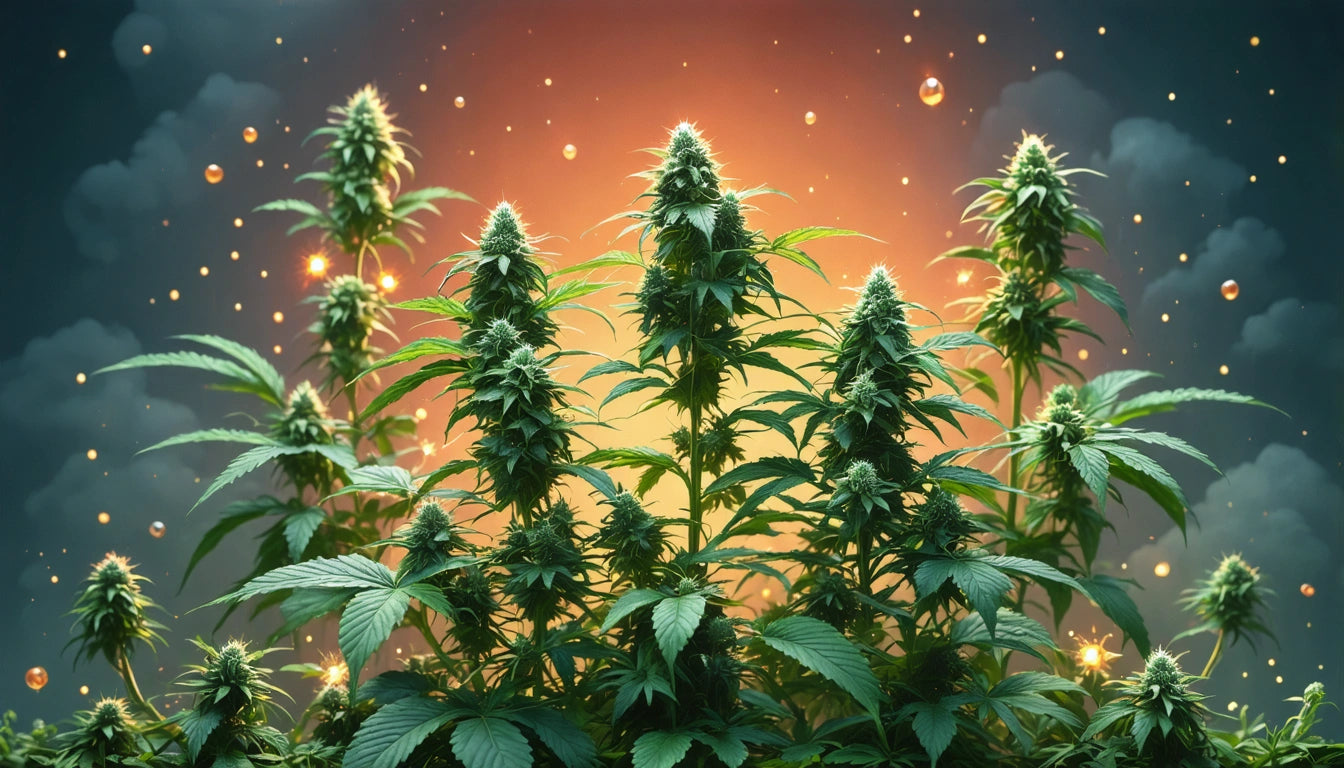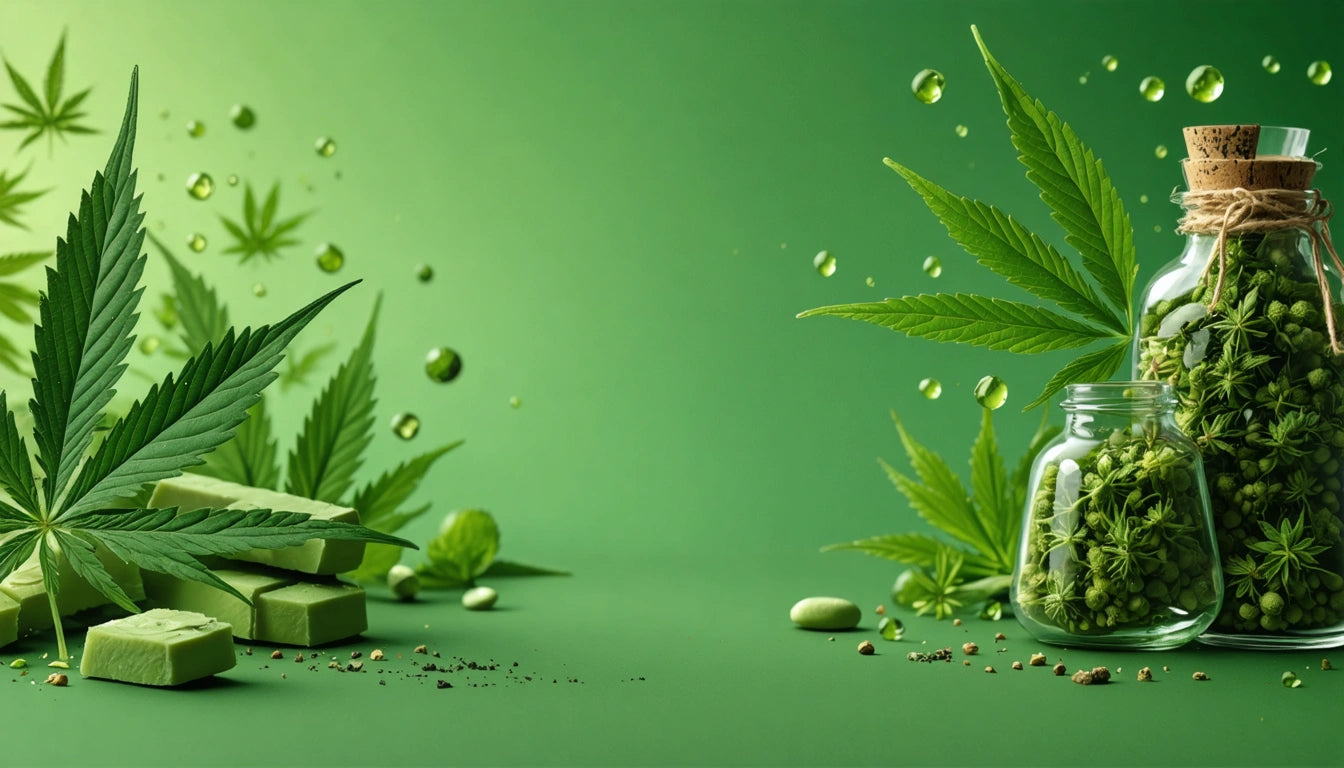Table of Contents
Exploring the Unique Characteristics of Jamaican Weed Strains
Jamaica's cannabis culture runs deep, with the island nation's relationship with the plant spanning centuries. Jamaican weed strains have developed distinctive characteristics shaped by the region's unique climate, soil composition, and cultivation traditions. These strains offer a window into both botanical evolution and cultural heritage that continues to influence global cannabis markets today.
Jamaican Cannabis History and Cultural Significance
Cannabis arrived in Jamaica in the 1800s when indentured laborers from India brought seeds with them. The plant quickly adapted to Jamaica's tropical climate and became integrated into local culture. As outlined in this guide to Jamaican cannabis culture, the plant holds spiritual significance within Rastafarian practices, where it's considered a sacred herb used for meditation and connection with divine consciousness.
The cultural significance extends beyond spiritual use. Jamaican farmers developed cultivation techniques passed down through generations, creating strains with unique genetic expressions. This cultural heritage has shaped not only the plant's characteristics but also influenced how cannabis is perceived globally.
Landrace Genetics: The Foundation of Jamaican Strains
Jamaican cannabis varieties began as landrace strains, meaning they evolved naturally in isolation without human intervention. These original genetics adapted specifically to Jamaica's tropical environment, developing resistance to local pests, humidity tolerance, and characteristics suited to the island's growing conditions.
Key landrace traits found in authentic Jamaican strains include:
- Resilience to high humidity levels
- Resistance to mold and mildew
- Adaptation to consistent 12/12 light cycles near the equator
- Ability to thrive in Jamaica's mineral-rich soil
These foundational genetics provide the building blocks for Jamaica's distinctive cannabis varieties, creating expressions unlike those found in other regions. Modern breeders often seek these genetics to incorporate their resilient qualities into new hybrid strains.
Popular Jamaican Strains and Their Characteristics
Lamb's Bread (Lamb's Breath)
Reportedly Bob Marley's favorite strain, Lamb's Bread is a sativa-dominant variety known for its energetic, creative effects and distinct resinous appearance. It typically features:
- Bright green, sticky buds with minimal purple coloration
- Strong earthy, woody aroma with citrus undertones
- Uplifting, cerebral effects balanced with mild body relaxation
- Moderate to high THC content (typically 15-22%)
King's Bread
Related to Lamb's Bread but with its own distinct profile, King's Bread offers:
- Dense, chunky bud structure with vibrant orange pistils
- Spicy, herbal flavor profile with sweet undertones
- Potent euphoric effects with enhanced sensory perception
- Traditional cultivation by small-scale farmers in Jamaica's highlands
Jamaican Pearl
A strain adapted for more temperate climates while maintaining Jamaican characteristics:
- Early finishing time compared to pure Jamaican landraces
- Sweet, tropical fruit aroma with earthy base notes
- Moderate THC levels with balanced effects
- Greater mold resistance for cultivation in varied climates
Understanding these varieties helps consumers appreciate the diversity within weed strain types and their unique effects.
Terpene Profiles and Aromatic Properties
The distinctive aromas of Jamaican cannabis strains come from their unique terpene profiles. Common terpenes found in Jamaican varieties include:
- Myrcene: Providing earthy, musky notes and potentially contributing to relaxing effects
- Limonene: Adding citrus characteristics and potentially uplifting properties
- Pinene: Contributing pine-like aromas and potentially enhancing alertness
- Caryophyllene: Offering spicy, peppery notes with potential anti-inflammatory properties
The specific combinations and ratios of these terpenes create the signature scents associated with authentic Jamaican strains. As explored in this guide to identifying strains by terpenes, these aromatic compounds play a crucial role in both the sensory experience and potential effects of cannabis varieties.
Traditional Cultivation Practices in Jamaica
Jamaican cannabis cultivation techniques have evolved over generations, with methods specifically adapted to the local environment:
Outdoor Growing in Natural Sunlight
Traditional Jamaican cannabis is primarily grown outdoors, taking advantage of the island's consistent sunlight and tropical climate. This natural cultivation approach contributes to the full expression of the plant's terpene profile and effect potential.
Organic Soil Amendments
Many Jamaican growers use locally sourced organic materials to enrich their soil, including:
- Bat guano for nitrogen and phosphorus
- Banana peels for potassium
- Fish waste for micronutrients
- Composted plant matter for soil structure
Water Conservation Techniques
Despite being a tropical environment, water management remains important. Traditional growers often implement:
- Mulching to retain soil moisture
- Strategic planting near natural water sources
- Rainwater collection systems
These cultivation practices contribute to the unique characteristics found in Jamaican strains. As cannabis legalization expands globally, proper handling and packaging of these products becomes increasingly important. Safety regulations for cannabis packaging, similar to those for pharmaceuticals, help ensure these products remain secure from children while accessible to adults.
Global Influence and Modern Adaptations
Jamaican cannabis genetics have spread worldwide, influencing breeding programs and consumer preferences across global markets. This cultural export has helped shape modern cannabis in several ways:
Genetic Preservation Efforts
As hybrid strains dominate commercial markets, several seed banks and breeders focus on preserving authentic Jamaican genetics. These preservation efforts maintain biodiversity within the cannabis gene pool and protect culturally significant varieties from extinction.
Incorporation into Modern Hybrids
Breeders frequently incorporate Jamaican genetics into new hybrid strains to introduce:
- Enhanced resistance to environmental stressors
- Unique terpene expressions not found in other lineages
- Balanced effect profiles that combine euphoria with functionality
When selecting strains with Jamaican heritage, consumers can reference comprehensive strain guides to identify varieties that match their preferences.
The global cannabis industry continues to evolve, with Jamaican varieties maintaining their distinctive place in the broader cannabis landscape. Understanding these unique characteristics helps consumers appreciate the rich heritage and specialized qualities that Jamaican weed strains contribute to cannabis culture worldwide.











Leave a comment
All comments are moderated before being published.
This site is protected by hCaptcha and the hCaptcha Privacy Policy and Terms of Service apply.